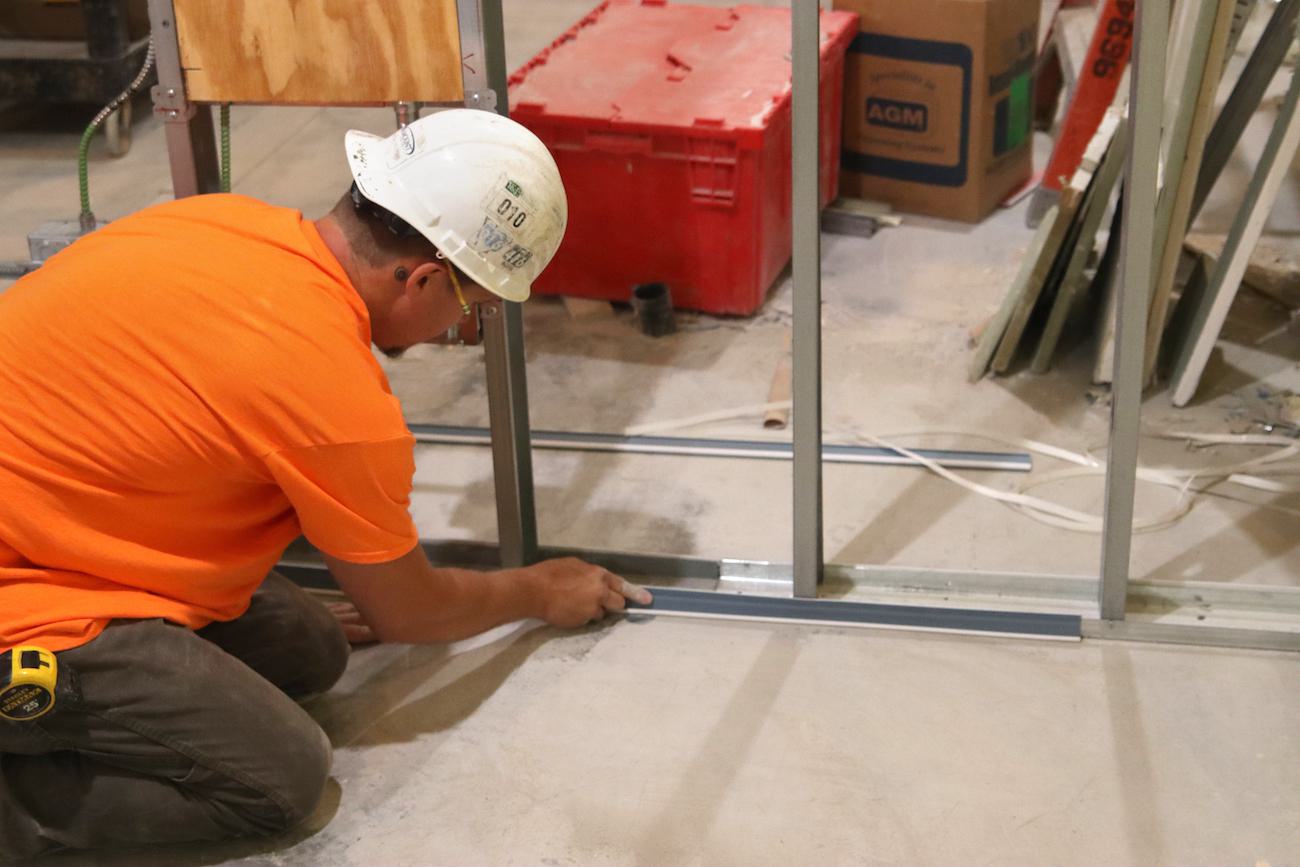Just outside of Harrisburg, Penn., the University of Pittsburgh Medical Center (UPMC) is gutting multiple floors of a massive red office building. Conveniently located just across the street from UPMC’s West Shore Hospital, general contractor Benchmark Construction is turning the structure into a new ambulatory medical office complex. But with 170,000 square feet of space, and plans to open its doors as soon as later this year, this retrofit is no small project. For Paramount Contracting, it required plenty of metal framing, drywalling, doorways, drop ceilings and a whole lot of fire- and sound-rated walls.
Fire & Sound Gaskets Case Study: Office Center – Harrisburg, PA


Paramount Contracting Project Manager Ryan Roberts was tapped to start work on renovating the building’s second floor. The opportunity to move on to additionally retrofit the third floor would be contingent on the quality of their work here on the second, so Ryan needed to make sure his crew’s execution was absolutely top-notch.
To get that third-floor job they wanted, the drywall crew also needed to be very fast in their work, with a minimum of return trips to fix mistakes — and that can be a real problem when you’re using a lot of sound and fire caulks for your code compliance requirements. With HIPAA regulations demanding soundproofing for every single room on the floor, and another eight rooms that also needed firestopping work, this problem added up to a major issue for the contractor.
When looking for an alternative to acoustical and firestopping sealants, Paramount Contracting was searching for two things: speed and simplicity. And "speed and simplicity" are the perfect words to use to describe the code compliance solutions they selected: Trim-Tex’s Fire Gasket and Sound Gasket.
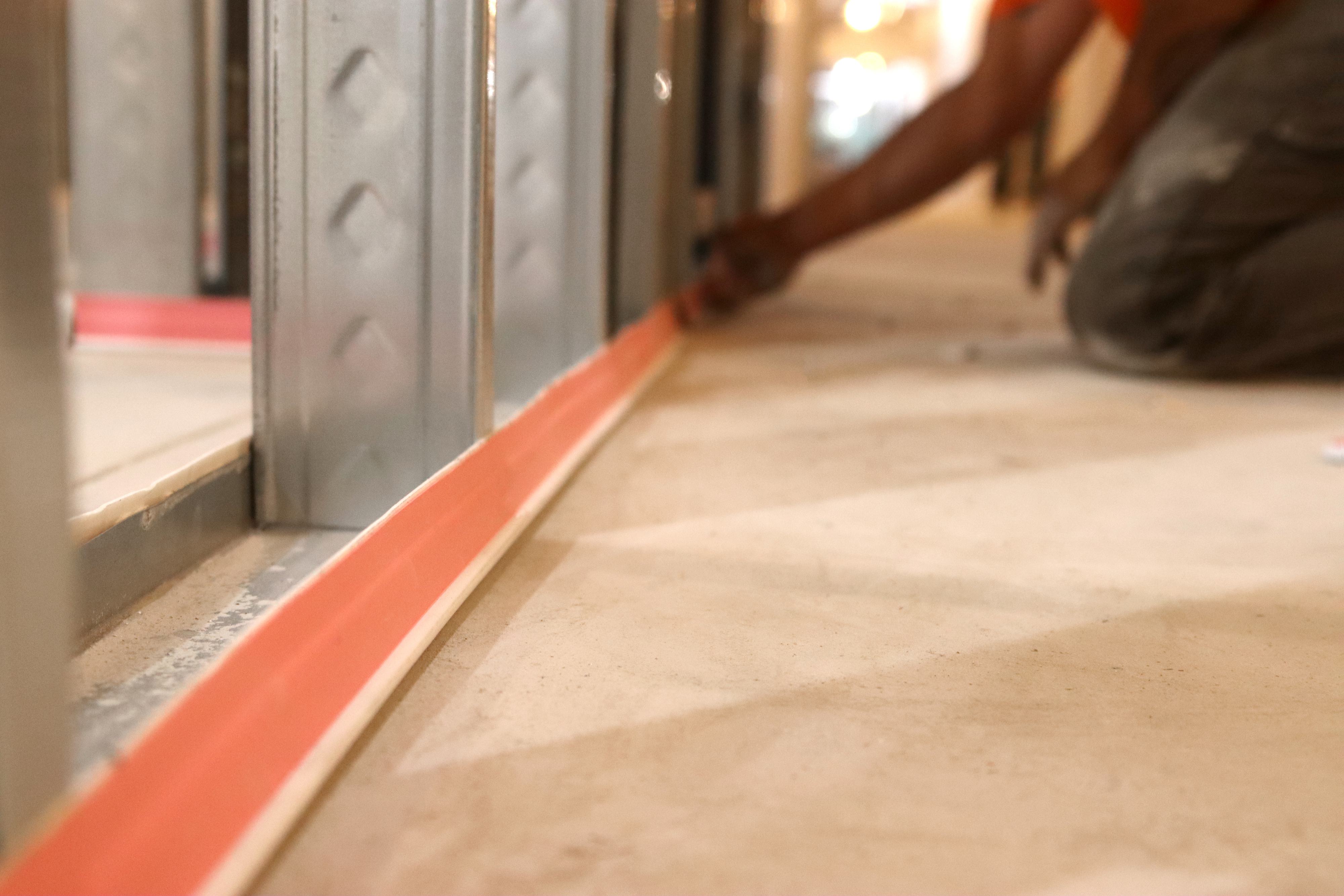
Speed: ‘You just stick it right on the wall and you're done’
Paramount Contracting began the Tech Park Office Center project using acoustical sealant for their head-of-wall joints. Growing frustrated with their productivity using this method, they tried out Fire and Sound Gaskets — the latter of which dampens the passage of noise between walls, the former prevents the spread of flames and smoke — installing them along all their bottom-wall gaps.
The difference in installation speed, they soon found out, was immense — up to five times faster, in many cases, with the same or better STC values as sealants. One major reason for this acceleration in speed was due to their ability to install these solutions long before they needed to hang drywall.
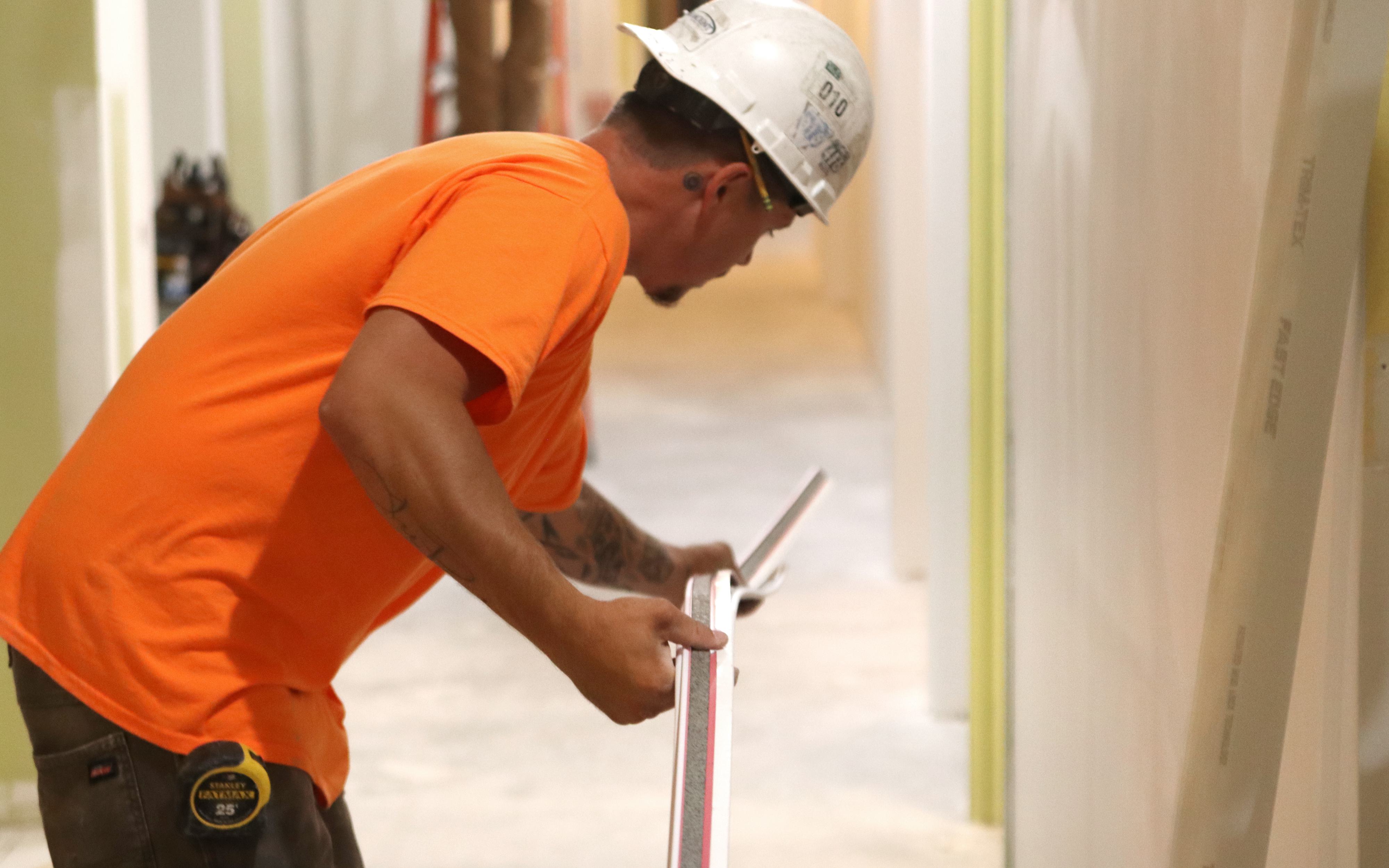
“This whole project, we started out doing the sound caulk, and then we discovered Sound Gasket, and I can tell you, it's been amazing,” Ryan told us. “It’s about speed. This eliminates a whole step. While we're waiting for trades to rough in, and we're doing the blocking portion, we can install this gasket ahead of drywall. Whereas, the other way, we're hanging drywall and then, during finishing — when you have dust, debris and everything else in your way — you're trying to caulk before they want to come in and paint and do flooring. This way, you're getting ahead of the project versus being behind it.”
With fire and sound caulks, anyone who’s ever used the stuff can tell you, they’re tricky and time-consuming to get right. It looks messy, and if you use too much or too little, you won’t pass inspection — meaning you’ll have to send folks back in to do it again. Another issue with sealants that slows down crews like this one, Ryan told us, comes down to the amount of debris that day-to-day construction work stirs up at the bottom-wall gaps.
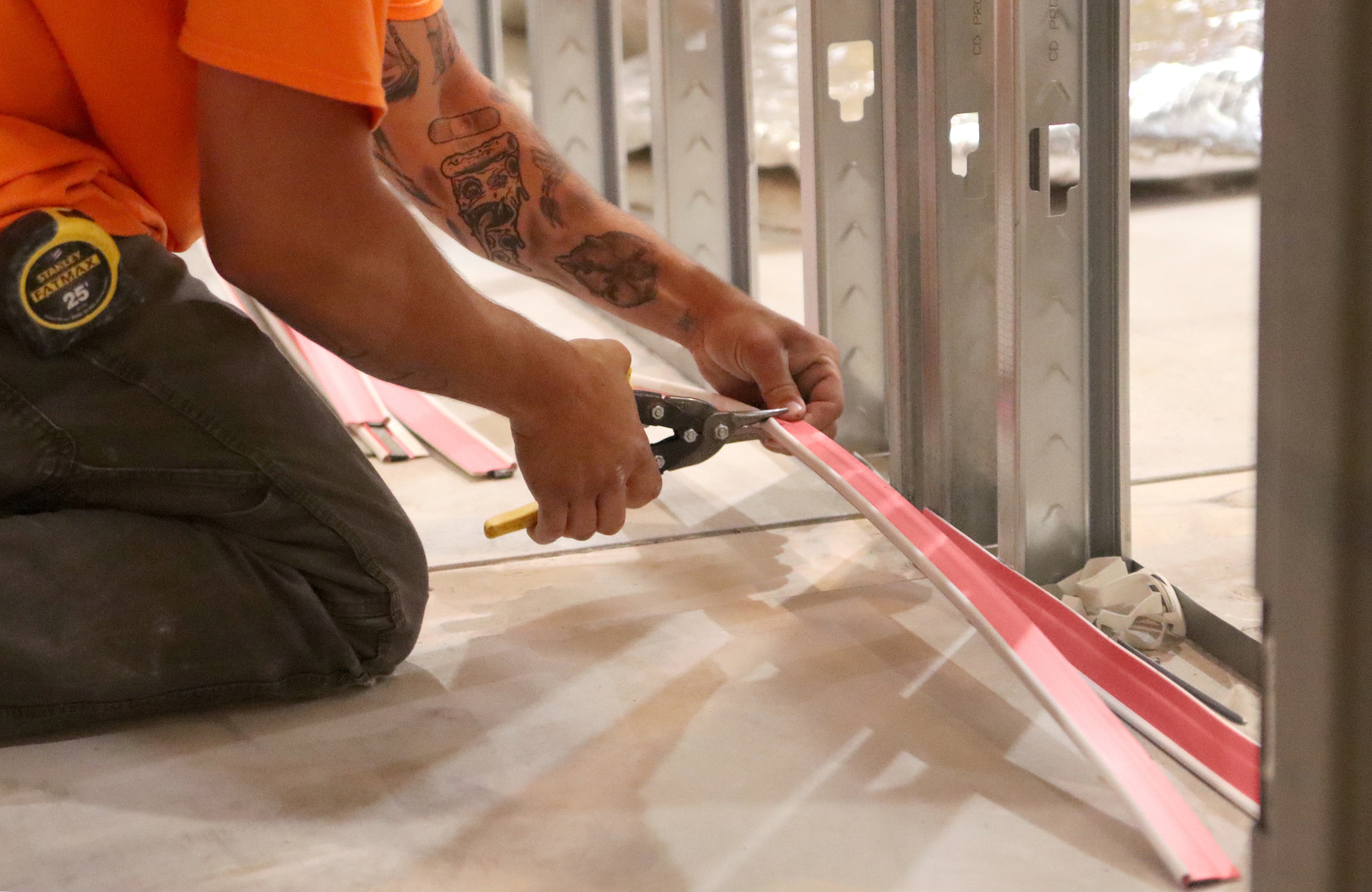
“A lot of times, there's just the dust from cutting drywall,” says Ryan. “In this building, we're doing nine-foot stand-ups. There might be some areas where we have to cut off [the drywall sheets]. Typically, that cut-off would be at the bottom, and there's already dust there. That doesn't allow the caulk to adhere correctly. If you don't Shop-Vac that all out, which is a whole ’nother step, you might fail inspection … There's dust, there's debris in your way, some from us, some from other trades, and then you have to fill the entire gap [with caulk]. With [Fire or Sound Gasket], you just stick it right on the wall and you're done. Everything's sealed.”
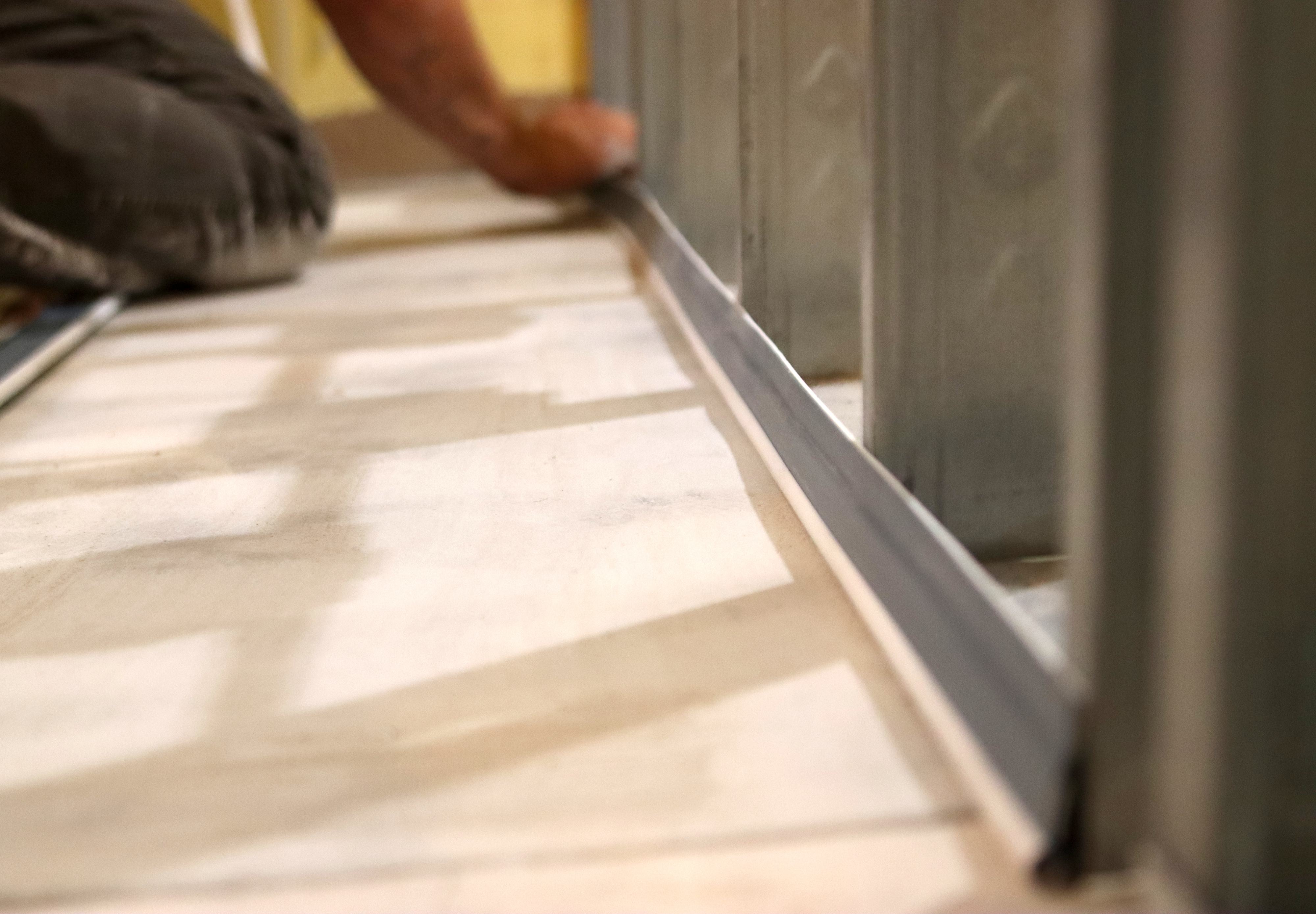
Simplicity: ‘You pretty much can't make a mistake on it’
Both Fire Gasket and Sound Gasket work like this: you’ve got a slab of resilient vinyl, at the apex of which is a flexible bubble gasket that compresses against the adjoining substrate (whether that’s a ceiling or, in the case of this project, a floor) to form a perfect, permanent seal. Where caulk will harden, shrink and separate over time — which will compromise the joint’s ability to prevent the passage of sound, smoke and/or fire — the bubble gasket is designed to remain flexible and effective for the lifetime of the wall assembly.
The gasket will also allow for structural movement (anywhere between a half-inch and an inch-and-a-half, depending on which size Fire Gasket you’re installing), eliminating the cracks in your finish that hardened caulks will cause. In the case of Fire Gasket, the vinyl bead also includes a strip of highly advanced intumescent tape that expands to 30 times its size when exposed to intense heat, choking off the spread of fire and smoke between the joints in which it’s installed.

This may all sound complex, but actually installing Fire and Sound Gasket is far from complicated: on the back of the vinyl slab you’ll see a strip (or, for Sound Gasket, two strips) of adhesive foam. You simply peel the backing from the foam (as seen above), and stick the device onto the framing member, making sure the bubble gasket is compressed against the adjoining substrate. That’s it — you’re done.
“You pretty much can't make a mistake on it,” Ryan said. “If you cut it short, you just add another piece. It's super simple. I don't think you can do it wrong … You can literally get your lowest man, your novice carpenter, to install this product with real ease. It's real self-explanatory. You just don't leave gaps. You make sure it's tight to the floor, stick it to the wall and you're done. It's real simple. Real simple.”
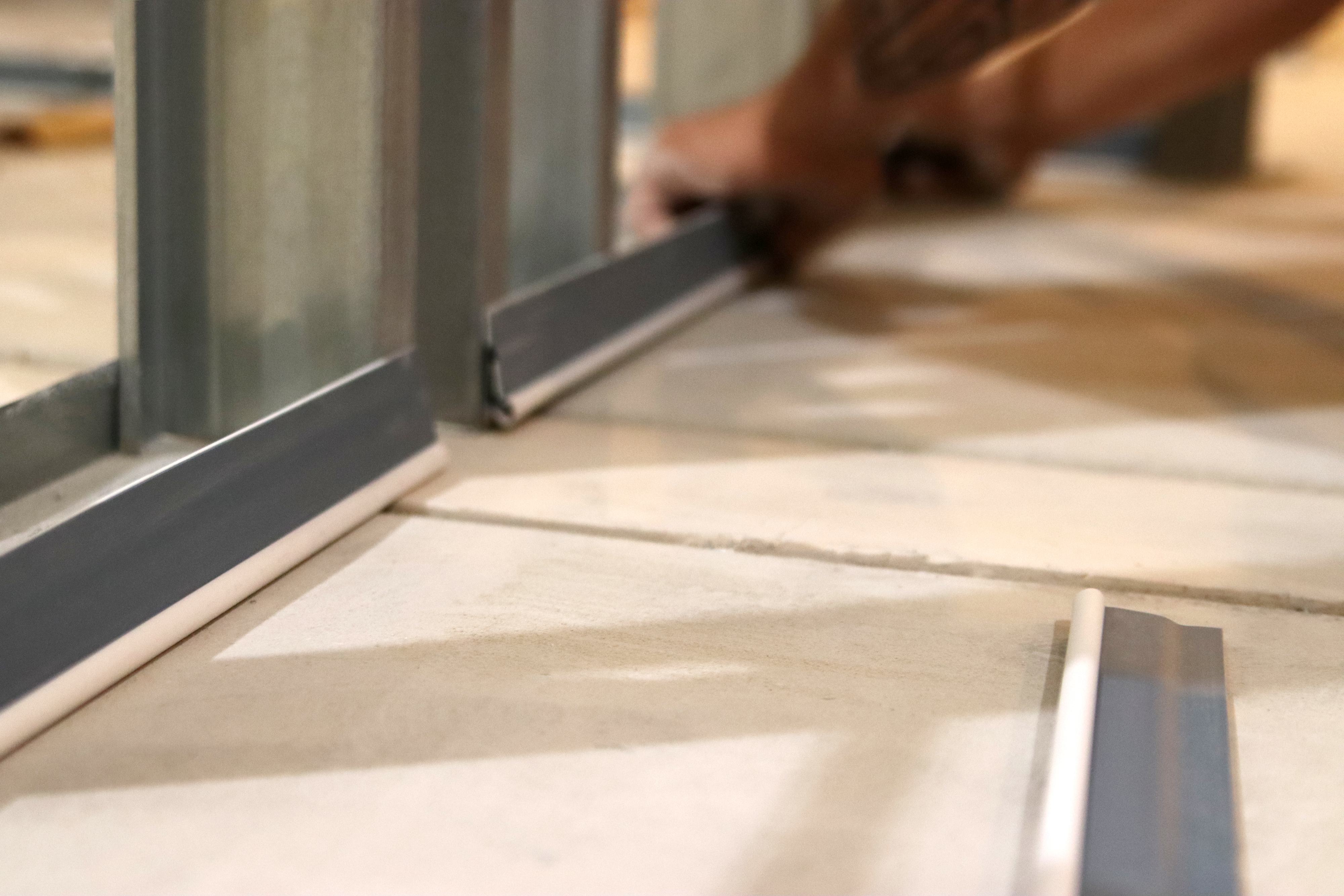
Between the speed of installation and the ease of use leading to fewer callbacks and lower-cost labor, Paramount Contracting saw a significant decrease in their overhead for this project. And, with such a strong performance on the second floor of the Tech Park Office Center — in no small part thanks to their choice to use Fire and Sound Gaskets for their code compliance needs — they were now primed to move on to retrofit the third floor as well.
“It's a more cost-efficient product, and anywhere you can save a dollar these days works out,” Ryan told us.
Thank you to Ryan Roberts and the whole crew at Paramount Contracting for hosting us when we visited them in Pennsylvania. If you need a top-quality commercial contractor in Pennsylvania, Maryland, Delaware, New Jersey, West Virginia or Virginia, contact Paramount at their website here. And to get a look at Fire Gasket and Sound Gasket for yourself, hit the button below to request a free sample pack.
